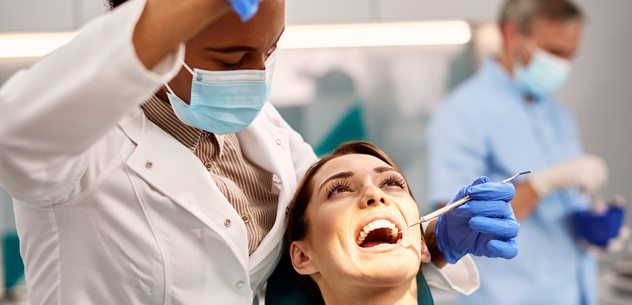Feb 24, 2024
Difference between an Orthodontist and a Dentist
Orthodontics is a speciality field of dentistry that deals with the diagnosis, prevention and correction of jaw relationships and teeth mal-alignments.

Orthodontics is a speciality field of dentistry that deals with the diagnosis, prevention and correction of jaw relationships and teeth mal-alignments. In general in UK in order for a dentist to become a member of the specialist register of orthodontists of the General Dental Council, he or she needs to undergo further few years of training in different specialist fields of Dentistry in order to advance their general training. This usually leads on to a three year full-time postgraduate programme in orthodontics that results in obtaining Masters in Orthodontics from University and Membership of Orthodontics of one of the Royal College of Surgeons.
Reasons to see an orthodontist for orthodontic treatment instead of a dentist
Most dentists are trained to provide simple orthodontic treatment with removable appliances in order to correct simple malocclusions such as correction of the cross bites. However correction of more complex malocclusions involving fixed appliances or combination of jaw surgery and orthodontics require the more expert help of the orthodontist. Ideally, the best cases are the ones that are treated through the collaboration of the dentist and orthodontist. These are the cases that the orthodontic work is complemented by the expert dental treatment that is received from the dentist, such as some periodontal treatment, construction of new crowns, bridges or fitting an implant or just simply tooth whitening or bleaching.
How training of dentists and orthodontists differ from each other
Most dentists in UK cover a general training in all speciality fields of Dentistry during their five-year programme. This training includes an overview of the orthodontic problems and simple orthodontic treatment with removable appliances. They also learn about the development of dentition and the appropriate time to refer a patient to an orthodontist once an anomaly is suspected. In contrast the three-year postgraduate programme of the orthodontists will give them a thorough insight into the dental and jaw development and any deviation from the normal through the genetic or environmental factors. They also cover detailed treatment methods of the dental and skeletal discrepancies with complex fixed appliances or jaw growth modification appliances.
Receiving orthodontic treatment
If you are not happy with the appearance of your teeth, your smile or the way you bite, you can request an orthodontic consultation. This can be regardless of your age. The orthodontist will then liaise with your dentist prior, during or after the orthodontic treatment for any other dental treatment that may be necessary. Orthodontic treatment can correct dental and skeletal problems, such as spaces between the teeth, crooked teeth, centre-line shifts, protruding teeth, deep bites, gummy smiles, cross bites and open bites.










